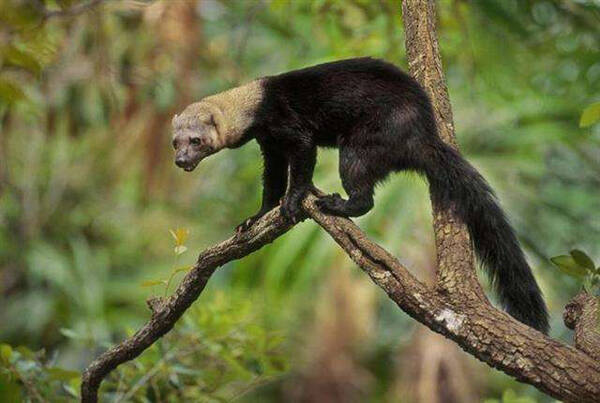Eira Barbara
IUCN
LCBasic Information
Scientific classification
- name:Eira Barbara
- Scientific Name:Eira Barbara
- Outline:Carnivora
- Family:mustelidae mustelinae schizopoda
Vital signs
- length:60-70cm
- Weight:3-6kg
- lifetime:10-20years
Feature
Apart from the otter, it is the largest mustelid in Latin America.
Distribution and Habitat
The stoat is found mainly in the jungles of Central and South America. It is found from southern Mexico to Bolivia and northern Argentina, and is also found on the island of Trinidad.
It mainly lives in tropical deciduous and evergreen forests, and plantations are also important habitats for it. It lives in lowlands to mountains at an altitude of about 2000-2400m. It mainly lives on the ground, nesting in tree holes, digging its own holes or modifying the holes of other animals, and occasionally nesting in tall grass.
Appearance
Adults weigh 3 to 6 kg, about the weight of a medium-sized dog. They have a long, fluffy tail and a long, sturdy neck. Their head and body are about 600 to 700 mm long, and their tail is about 350 to 450 mm long. Their paws are 80 to 90 mm long, and their ears are about 35 to 40 mm long. Their fur color varies with their geographic range, but generally they have a dark brown body with a slightly pale head. They usually have a white diamond-shaped marking on their throat. They have long claws and can make a barking sound.
Details
The scientific name of the fox stoat is Eira Barbara, a mustelid species native to Central America. It is the only species in the genus Eira Barbara and has 9 subspecies.

The fox stoat is a species that lives alone or wanders around in pairs. Sometimes they form small groups of three or four, and the gender structure within the group is not clear. The stoat can move on the ground and in trees, and it has good jumping and running abilities. It runs fast and uses its tail to balance its body. It can jump from one tree to the next branch. When in danger, it will give a short roar and find the nearest tree to climb up, although it usually remains silent.
The stoat has a varied diet. It prefers to eat small mammals. Mammals are the main part of the stoat's diet, but it also eats a considerable amount of fruits, invertebrates and reptiles. It will occasionally eat honey if it can get it.
The stoat breeds once a year. Each time, 2 to 3 pups weigh about 74 to 92 grams. The gestation period is 63 to 70 days, and the newborn's eyes open at 35 to 58 days. The lactation period is 2 to 3 months. Most researchers believe that ferrets mate seasonally, occurring between March and July. Others believe that ferrets mate non-seasonally, with each mating cycle lasting about 17 days.
Because ferrets live close to humans, farmers believe that the animal can cause some damage to plantations. It occasionally eats livestock and destroys corn and sugar cane, but the damage is usually minor. It can be tamed and is often kept as a pet. People in ferret-producing areas once used it for rodent control. It is not seriously threatened in most of its producing areas. However, in Mexico, modern agricultural practices and fur hunting have caused its decline, and the IUCN considers the Mexican subspecies "vulnerable."
Listed in the IUCN Red List of Threatened Species in 2015 ver 3.1 - Least Concern (LC).
Listed in Appendix I, II and III of the Convention on International Trade in Endangered Species of Wild Fauna and Flora (CITES) 2019 edition Appendix III.
Protect wild animals and eliminate game.
Maintaining ecological balance is everyone's responsibility!








